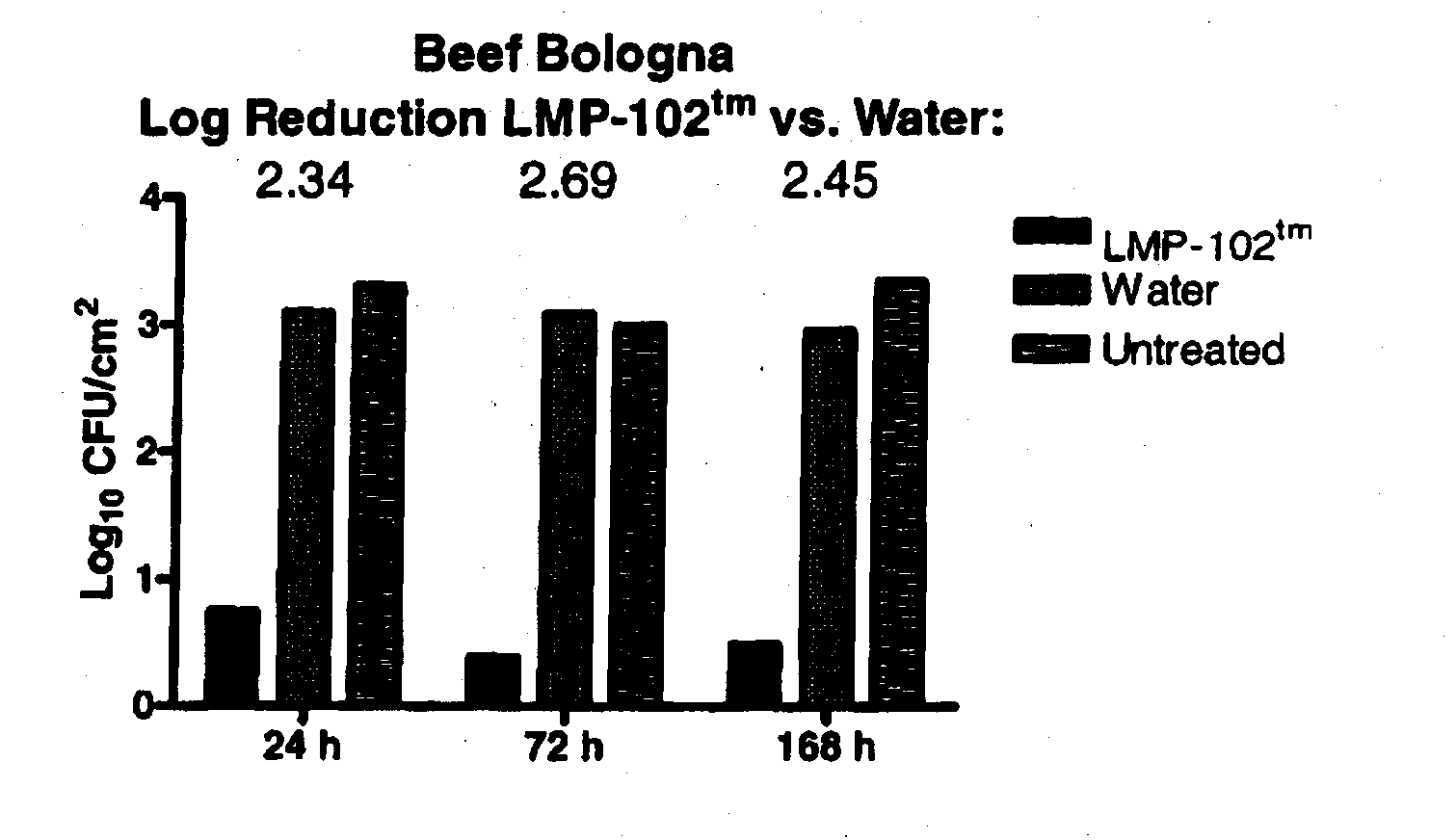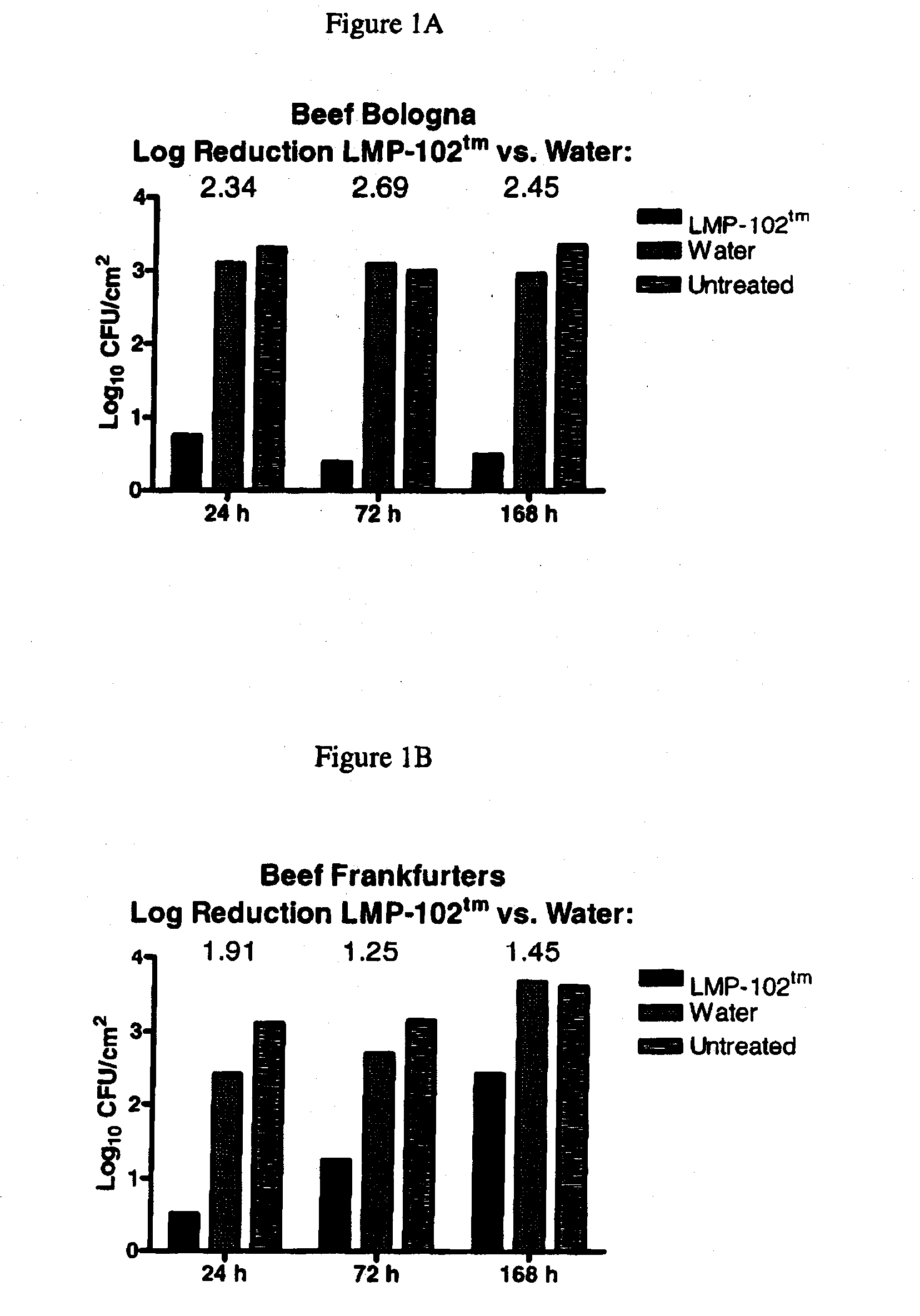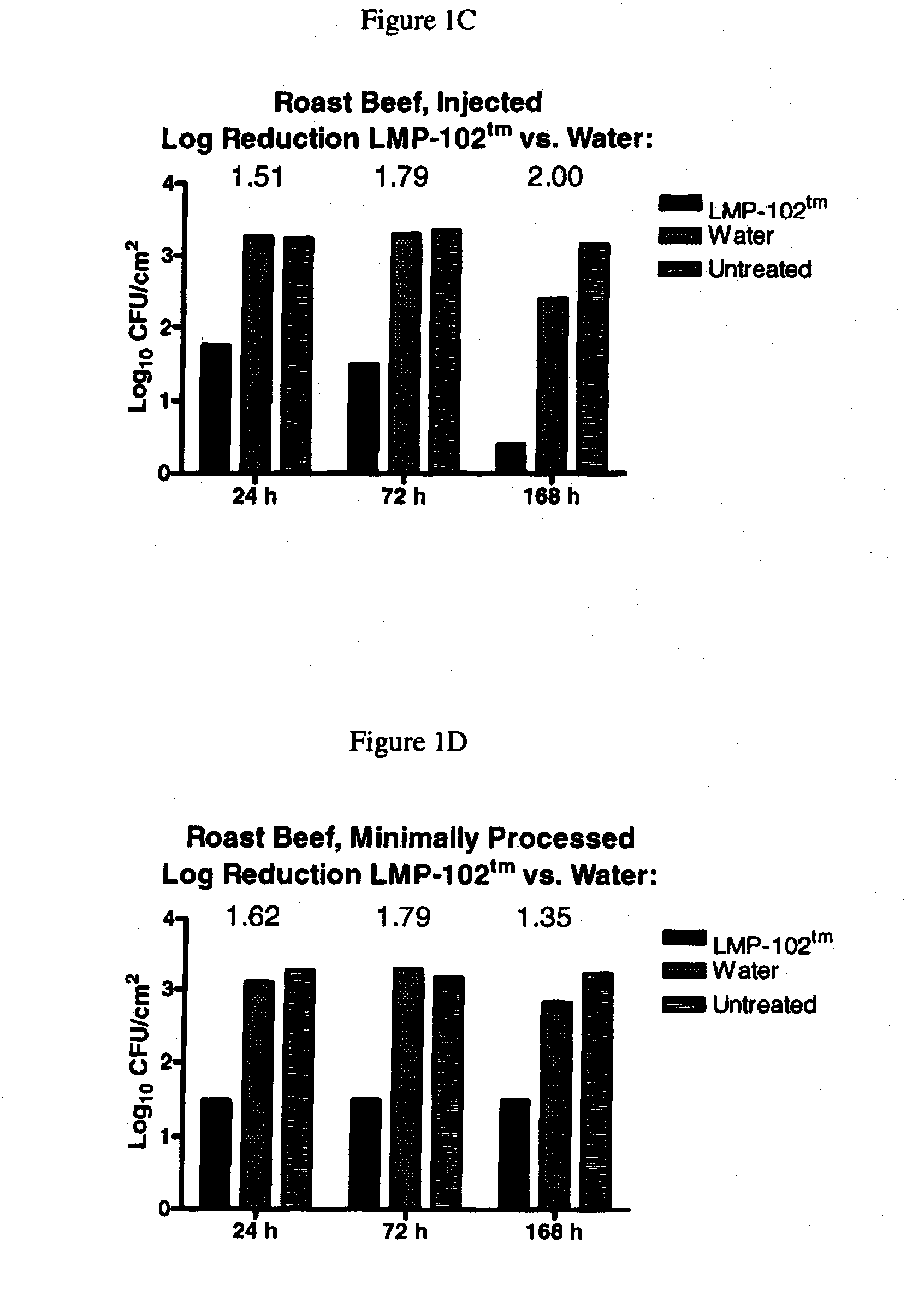Novel listeria monocytogenes bacteriophage and uses thereof
a bacteriophage and listeria monocytogene technology, applied in the field of new listeria monocytogenes bacteriophage, can solve the problems of phage therapeutic use gradually falling out of favor, variable early studies to evaluate bacteriophage as antimicrobial agents, and ineffective antimicrobial effects of bacteriophag
- Summary
- Abstract
- Description
- Claims
- Application Information
AI Technical Summary
Benefits of technology
Problems solved by technology
Method used
Image
Examples
example 1
Listeria monocytogenes Bacteriophage Isolation
[0077]Listeria monocytogenes bacteriophage, specifically including LIST-1, LIST-2, LIST-3, LIST-4, LIST-36, and LIST-38, were isolated from Baltimore Inner Harbor waters using lysis of Listeria monocytogenes to form plaques in bacterial lawns as a means of detecting the presence of bacteriophage having lytic specificity for Listeria monocytogenes. Plaques are harvested, diluted and re-plated on bacterial lawns through a process of serial enrichment until a single bacteriophage species, or monophage, results as determined by a stable restriction fragment length profile of the bacteriophage DNA. The isolates obtained using the technique recited supra may be cultured using the techniques as set forth herein. Listeria monocytogenes bacteriophage was deposited with the ATCC, receiving ATCC Deposit Accession Nos. PTA-5372, PTA-5373, PTA-5374, PTA-5375, PTA-5376 and PTA-5377.
[0078]PFU concentration of the Listeria monocytogenes bacteriophage ma...
example 2
Production of Listeria monocytogenes Bacteriophage Lysate in Liquid Culture
[0079]Listeria monocytogenes Bacteriophage Culturing
[0080]Single aliquots of Listeria monocytogenes, stored in 70% LB broth / 30% glycerol medium, were revived from a −80° C. freezer. The Listeria monocytogenes culture was allowed to thaw at room temperature for 15-30 min., followed by brief vortexing. Ten ml of Listeria monocytogenes were inoculated into 35 ml of LB-broth medium, and cultured at 30° C. at 150 rpm over-night on a rotary shaker. The resulting OD600 of the culture was approximately 0.3-0.4.
[0081]Ten ml of Listeria monocytogenes were inoculated into 100 ml of LB broth medium, and cultured at 30° C. at 150 rpm for approximately 2-2.5 hours, until the OD600 reaches 0.1. To this culture were added a total of approximately 109 PFU of Listeria monocytogenes bacteriophage. PFU of the Listeria monocytogenes bacteriophage was confirmed before-hand.
[0082]The mixture was then transferred to a 2 L flask cont...
example 3
Alternative Production of Listeria monocytogenes Bacteriophage Lysate in Liquid Culture
[0091]Shake flask batches of each phage are produced in 2-L flasks rotated at 100 to 200 rpm in a shaker-incubator (Model C-24; Now Brunswick Scientific Co., Edison, N.J.). Listeria monocytogenes strains are grown in Luria-Bertani (LB) broth at 30° C. to an OD600 of 0.1-0.3 absorbance units. Cultures are then infected at a multiplicity of infection (MOI; the ratio of phage to bacteria) previously determined to be optimal for each phage. Growth is monitored spectrophotometrically until lysis occurs and the phages are harvested by vacuum filtration (Stericup; Millipore, Billerica, Mass.). The material is then processed as previously described.
[0092]Large-scale batches of each phage are generated in a 10-L Bioflo 110 fermenter (New Brunswick Scientific Co., Edison, N.J.) containing 10 L of Terrific Broth (TB) supplemented with 4 ml / L glycerol and Antifoam 204 (Sigma-Aldrich, St. Louis, Mo.) as needed...
PUM
| Property | Measurement | Unit |
|---|---|---|
| volumes | aaaaa | aaaaa |
| pore size | aaaaa | aaaaa |
| concentrations | aaaaa | aaaaa |
Abstract
Description
Claims
Application Information
 Login to View More
Login to View More - R&D
- Intellectual Property
- Life Sciences
- Materials
- Tech Scout
- Unparalleled Data Quality
- Higher Quality Content
- 60% Fewer Hallucinations
Browse by: Latest US Patents, China's latest patents, Technical Efficacy Thesaurus, Application Domain, Technology Topic, Popular Technical Reports.
© 2025 PatSnap. All rights reserved.Legal|Privacy policy|Modern Slavery Act Transparency Statement|Sitemap|About US| Contact US: help@patsnap.com



